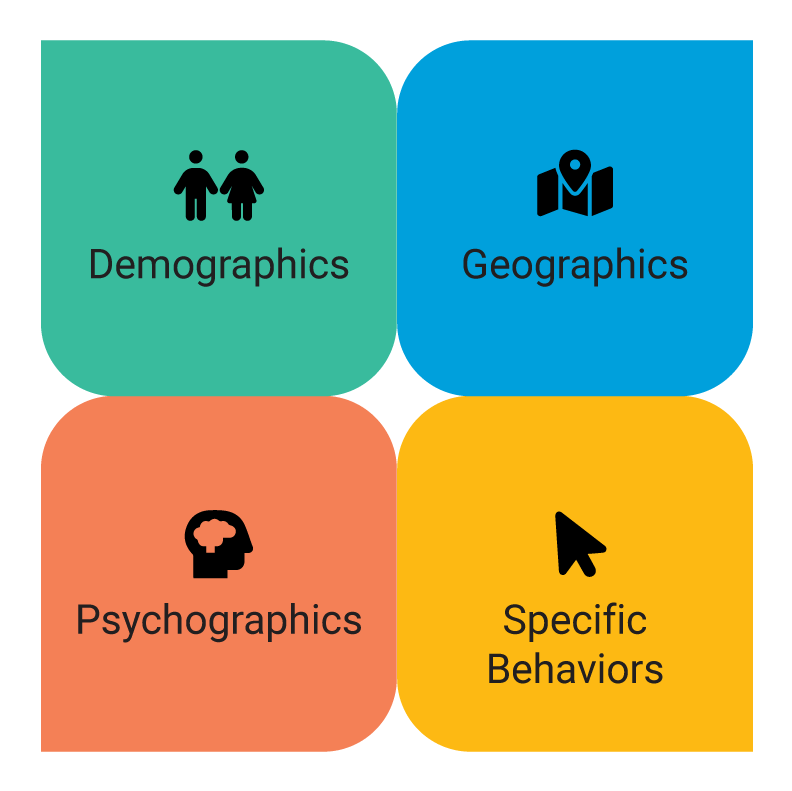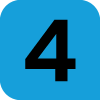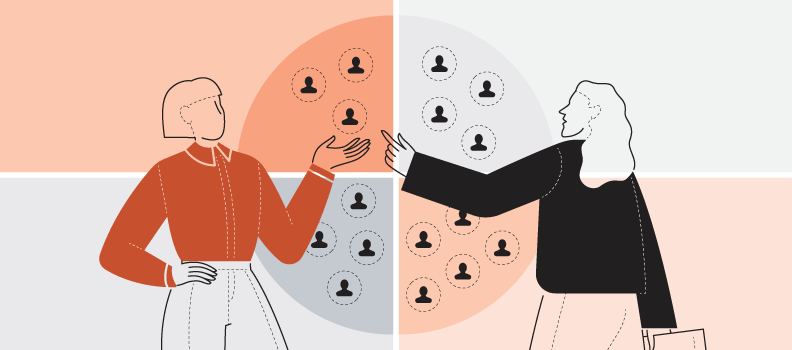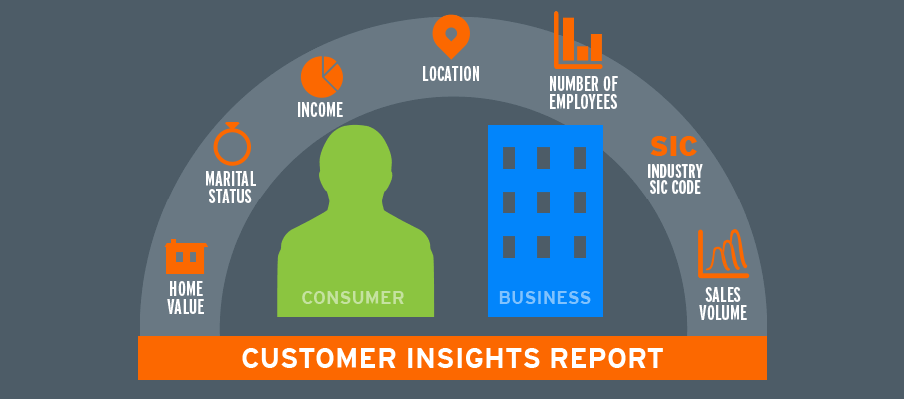The human brain is quite a wonder. Princeton University researchers suggest that the brain may be working from subconscious mental categories it creates based on how it considers people, objects and actions are related.
In other words, our brains naturally categorize the world around us in an effort to help us make sense of it all—and we don’t even realize this is happening!
But the truth is, categories are necessary for day-to-day living. They not only help us process information, but studies show that categorization also helps us learn, remember, and even integrate information we learn.
So, it’s natural that a business should utilize categories to define its customers. After all, sorting customers by like-demographic or firmographic information can help you recognize what your ideal (and non-ideal) prospects or clients actually look like.
Without this sort of data, a business is simply making educated guesses regarding its clientele. And we don’t have to tell you that while there is nothing wrong with guessing, it’s much more beneficial for your business to know certain things for sure.
What is customer segmenting?
When it comes to your customer or prospect list, categorization is often referred to as customer segmentation. By segmenting your customers, you’re organizing your audience into categories so that you can more easily target needs, wants, and even pain points.
In business, there are four popular segments or groups that you use to divide up your customers:

Demographics
“Who” you are selling to? Consider segmenting by things like age, gender, religion, households with veterans, households with grandparents, or level of education.
Geographics
“Where” are you selling your product or service? For some business, it may be locally and for others it could be worldwide. Your business can segment by things like county, neighborhood, state, carrier route, or ZIP Code.
Psychographics
This enables you to categorize by way of the “why” you’re selling to a particular person or group. These segments contain people with likened values, lifestyle, hobbies, life goals, or even specific personality traits.
Specific Behaviors
“How” does a particular person (or group) behave? Understanding the “how” can help you target new customers who are similar to your existing ones in addition to helping you perform tasks like cross-selling and upselling. Data may include brand interaction, higher-than-average click rate, purchase history, browsing habits, website activity, and mobile versus desktop users.
Using customer segmentation to sell
When you first started your business you (or an employee) worked on a customer avatar or persona. Doing so will help you to understand some key things about each individual customer including:
- Who your customer is
- Where they spend their time
- What challenges or pain points they face
- How you can sell to them
Having an avatar helps you truly understand your customers as individuals. In doing so, you’re more easily able to categorize or segment them. And in doing that, you make it easier to market to them.
And remember that over time, a business grows, ultimately attracting many different personality types. That is why it’s so important to continue evolving (or creating new) avatars for your business.
Why? Different people have different needs from your product or service. Consider that customers who purchase the exact same things may have very different reasons for doing so. Understanding those reasons is what will help you evolve your product or service, segment your audience, and continue appealing to prospects.
Customer segmentation 101
When you’re ready to segment your customer list, you may feel lost with where to start. Consider following these 5 simple steps:

Review goals
What data is going to help you sell to your lists most efficiently? You can base this list on your ICA (Ideal Customer Avatar) or Persona. Consider the data you’re already collecting in pursuit of tracking your goals versus what data you need to begin collecting to measure your success.

Create segments
These don’t need to be your “forever” segments. They simply need to serve as a jumping off point. Use your goals to get creative with some initial categories or groups based on information you already have on hand. For instance, even if you’re only collecting email addresses, (no name or additional identifiers) you can sort your lists by open rates or click thru rates. Additional initial segments could be:
- Gender
- Age
- # of purchases to date
- Geographical location
- Birthday month
- Mobile versus desktop users
- Purchase history

Target segments
You won’t always intrigue your new segment immediately. But as with anything related to marketing, it’s important to continue trying new things. Does a particular segment prefer video content over written content? Maybe one segment reacts to emojis while another doesn’t. Treat all marketing efforts as experiments. Be open to trying new tactics and re-working your segments based on reaction.

Update collection tools
From asking about age to postal code, to hobbies and interests, you’ll want to gain multiple insights from every customer who offers you their information. You don’t need to do it all via an initial collection form, either. Send a survey with basic questions that will help you deepen your segmentation. Or ask questions on your social media page that might help you fill in additional blanks. As an example, you could ask people to name their birthday month. Change up the information you collect as your business goals change.

Always analyze results
When it comes to building successful segments, you’ll want to analyze and review the behavior your segments are demonstrating. Knowing what works in your marketing—and what doesn’t—is key to increasing your overall sales.
Tracking customers for segmentation
If you don’t already utilize a CRM, there is no better time to begin than when you decide to create list segments.
CRM stands for Customer Relationship Management which is a type of software program that help you “get to know” your customers.
That’s because a CRM keeps a data related to your customers and prospects in a single space. Use CRM software to track how often a customer stops through your store or when their birthday is. In doing so, anyone with access to your company’s CRM can build a relationship with each customer and come up with ideas regarding segments for your business.
The benefits of CRM software go beyond segmentation, of course. A CRM can also help you manage your marketing efforts and even increase productivity within your company. Keep track of who you contacted, how, and when, in addition to what purchases have been made (and when). Studying this information may lead to new insights about your audience and help you further develop your offerings.






